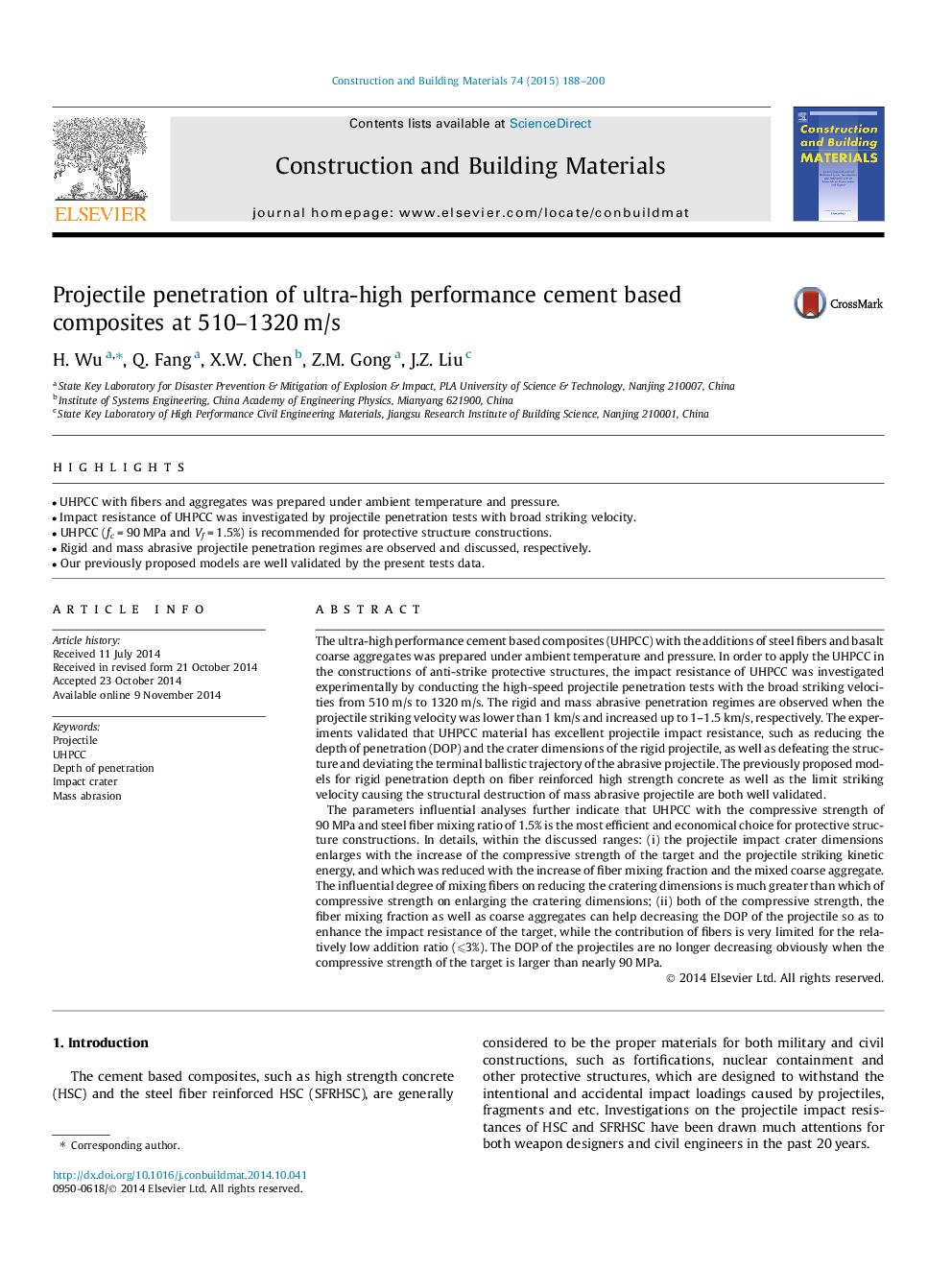| Article ID | Journal | Published Year | Pages | File Type |
|---|---|---|---|---|
| 257159 | Construction and Building Materials | 2015 | 13 Pages |
•UHPCC with fibers and aggregates was prepared under ambient temperature and pressure.•Impact resistance of UHPCC was investigated by projectile penetration tests with broad striking velocity.•UHPCC (fc = 90 MPa and Vf = 1.5%) is recommended for protective structure constructions.•Rigid and mass abrasive projectile penetration regimes are observed and discussed, respectively.•Our previously proposed models are well validated by the present tests data.
The ultra-high performance cement based composites (UHPCC) with the additions of steel fibers and basalt coarse aggregates was prepared under ambient temperature and pressure. In order to apply the UHPCC in the constructions of anti-strike protective structures, the impact resistance of UHPCC was investigated experimentally by conducting the high-speed projectile penetration tests with the broad striking velocities from 510 m/s to 1320 m/s. The rigid and mass abrasive penetration regimes are observed when the projectile striking velocity was lower than 1 km/s and increased up to 1–1.5 km/s, respectively. The experiments validated that UHPCC material has excellent projectile impact resistance, such as reducing the depth of penetration (DOP) and the crater dimensions of the rigid projectile, as well as defeating the structure and deviating the terminal ballistic trajectory of the abrasive projectile. The previously proposed models for rigid penetration depth on fiber reinforced high strength concrete as well as the limit striking velocity causing the structural destruction of mass abrasive projectile are both well validated.The parameters influential analyses further indicate that UHPCC with the compressive strength of 90 MPa and steel fiber mixing ratio of 1.5% is the most efficient and economical choice for protective structure constructions. In details, within the discussed ranges: (i) the projectile impact crater dimensions enlarges with the increase of the compressive strength of the target and the projectile striking kinetic energy, and which was reduced with the increase of fiber mixing fraction and the mixed coarse aggregate. The influential degree of mixing fibers on reducing the cratering dimensions is much greater than which of compressive strength on enlarging the cratering dimensions; (ii) both of the compressive strength, the fiber mixing fraction as well as coarse aggregates can help decreasing the DOP of the projectile so as to enhance the impact resistance of the target, while the contribution of fibers is very limited for the relatively low addition ratio (⩽3%). The DOP of the projectiles are no longer decreasing obviously when the compressive strength of the target is larger than nearly 90 MPa.
